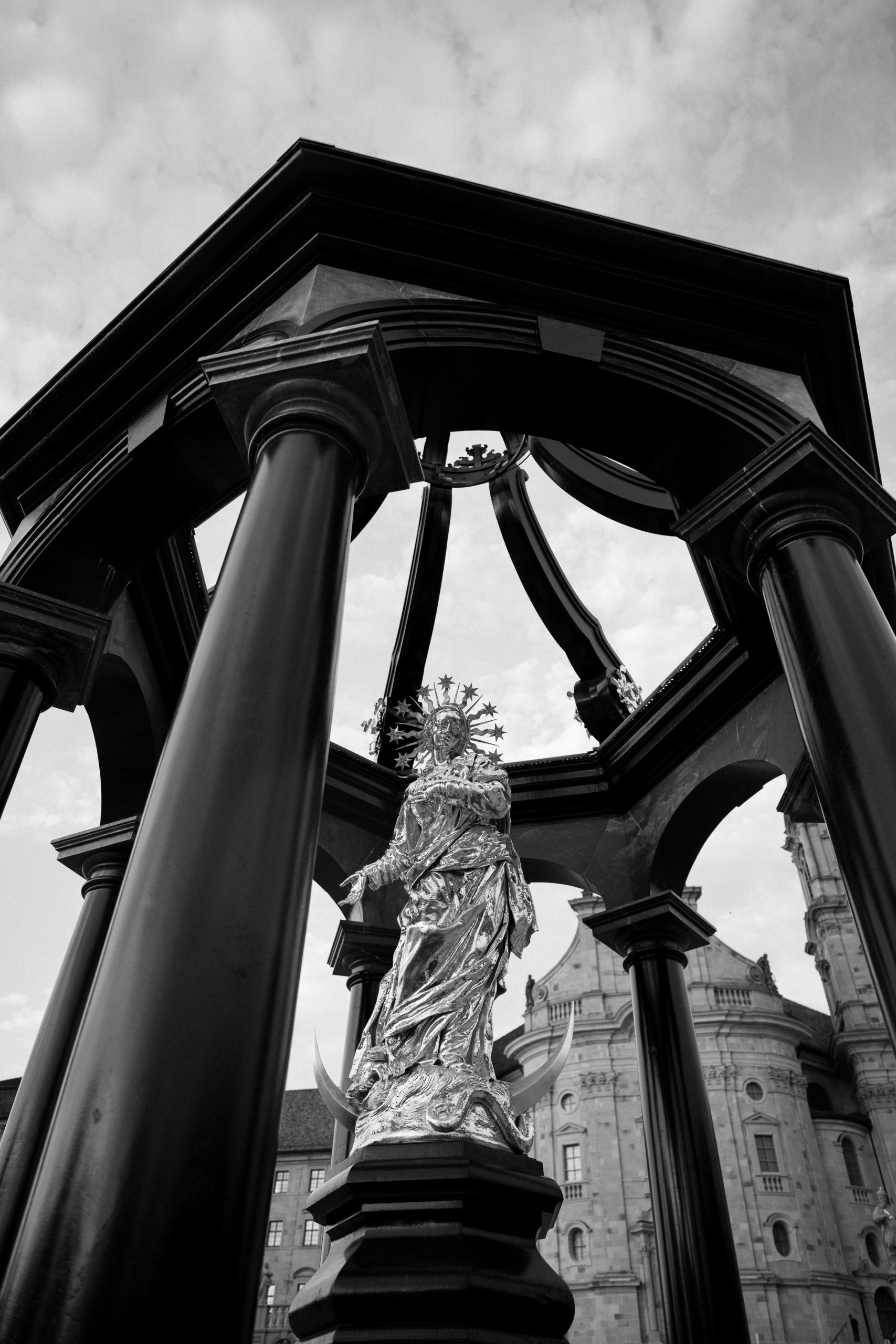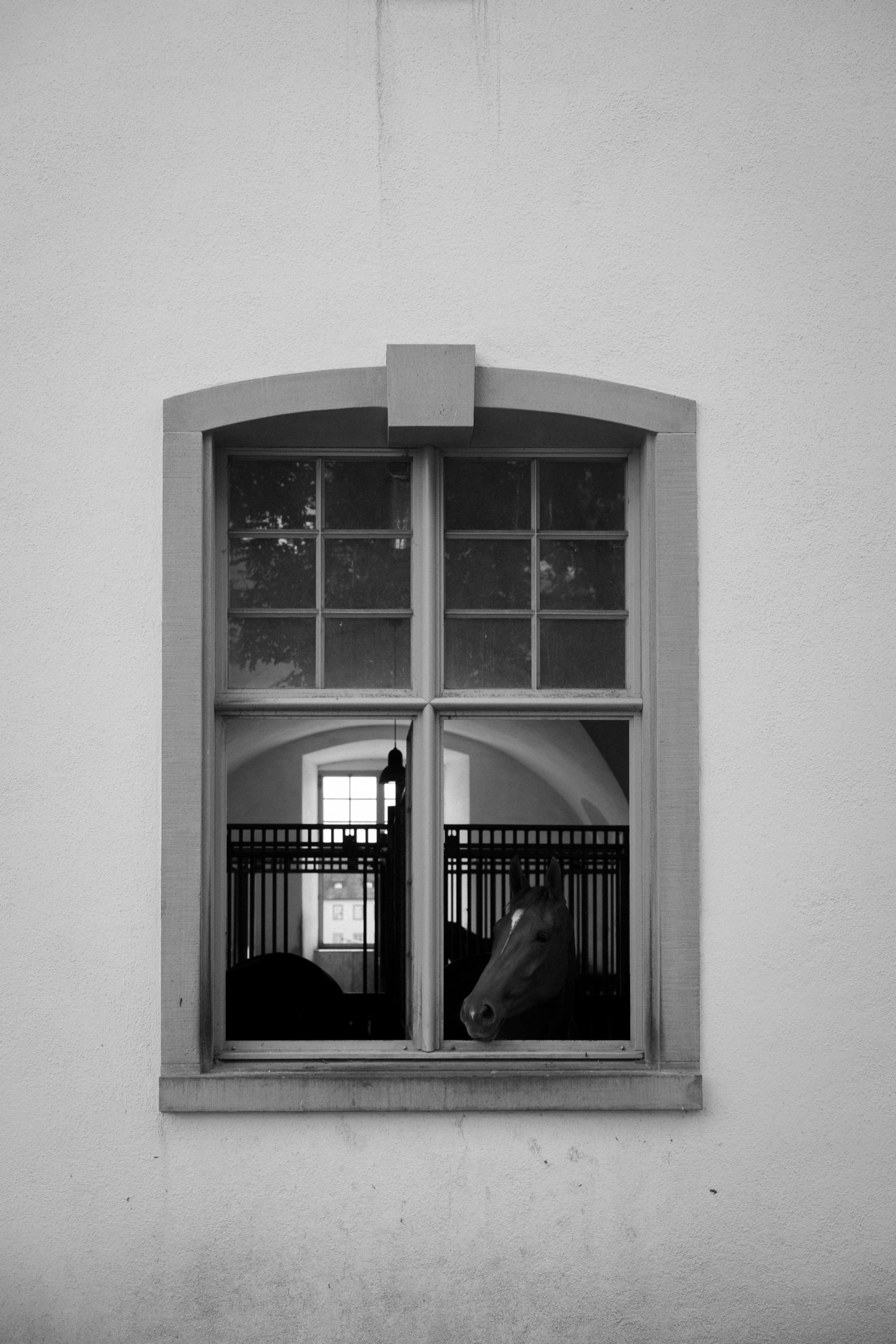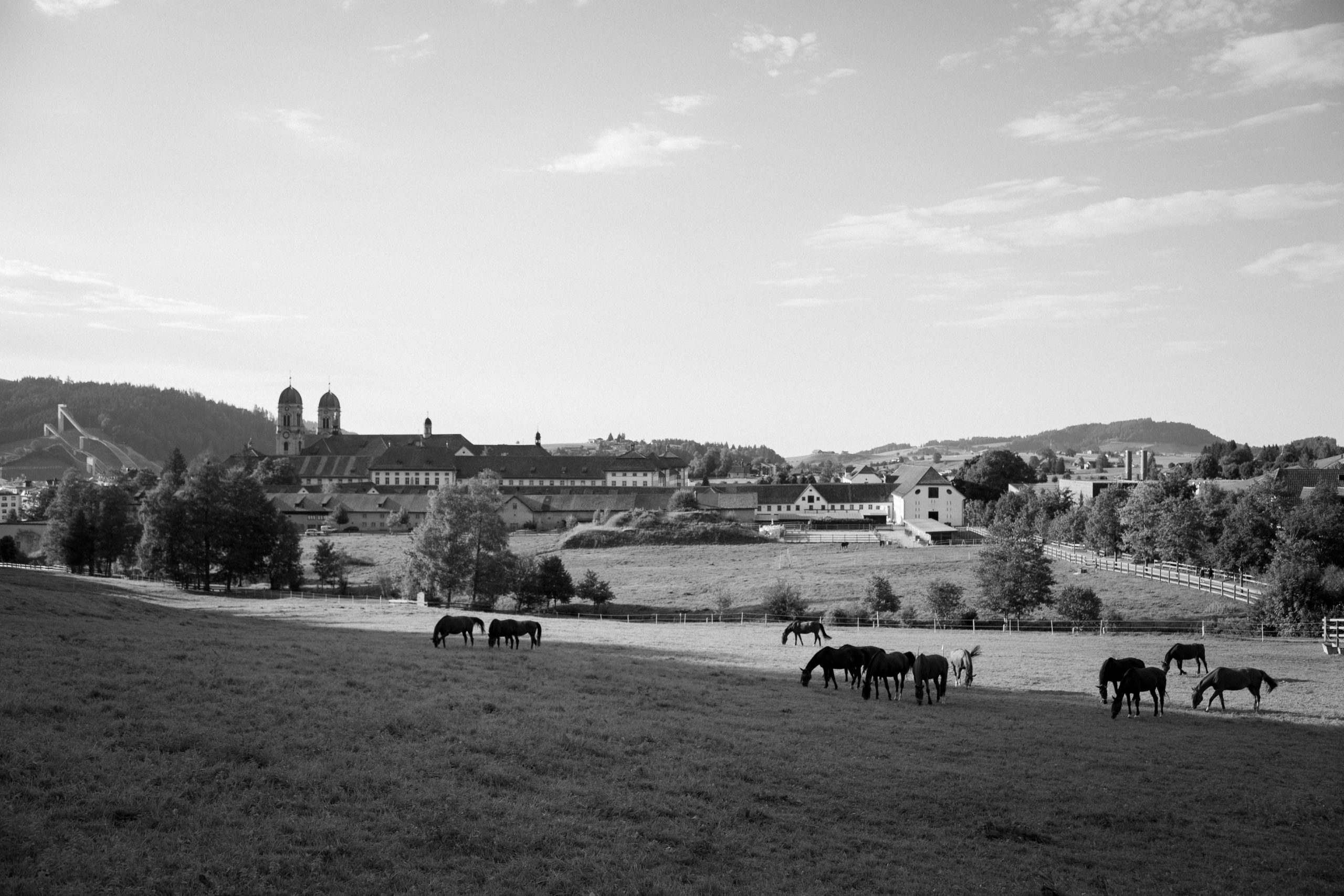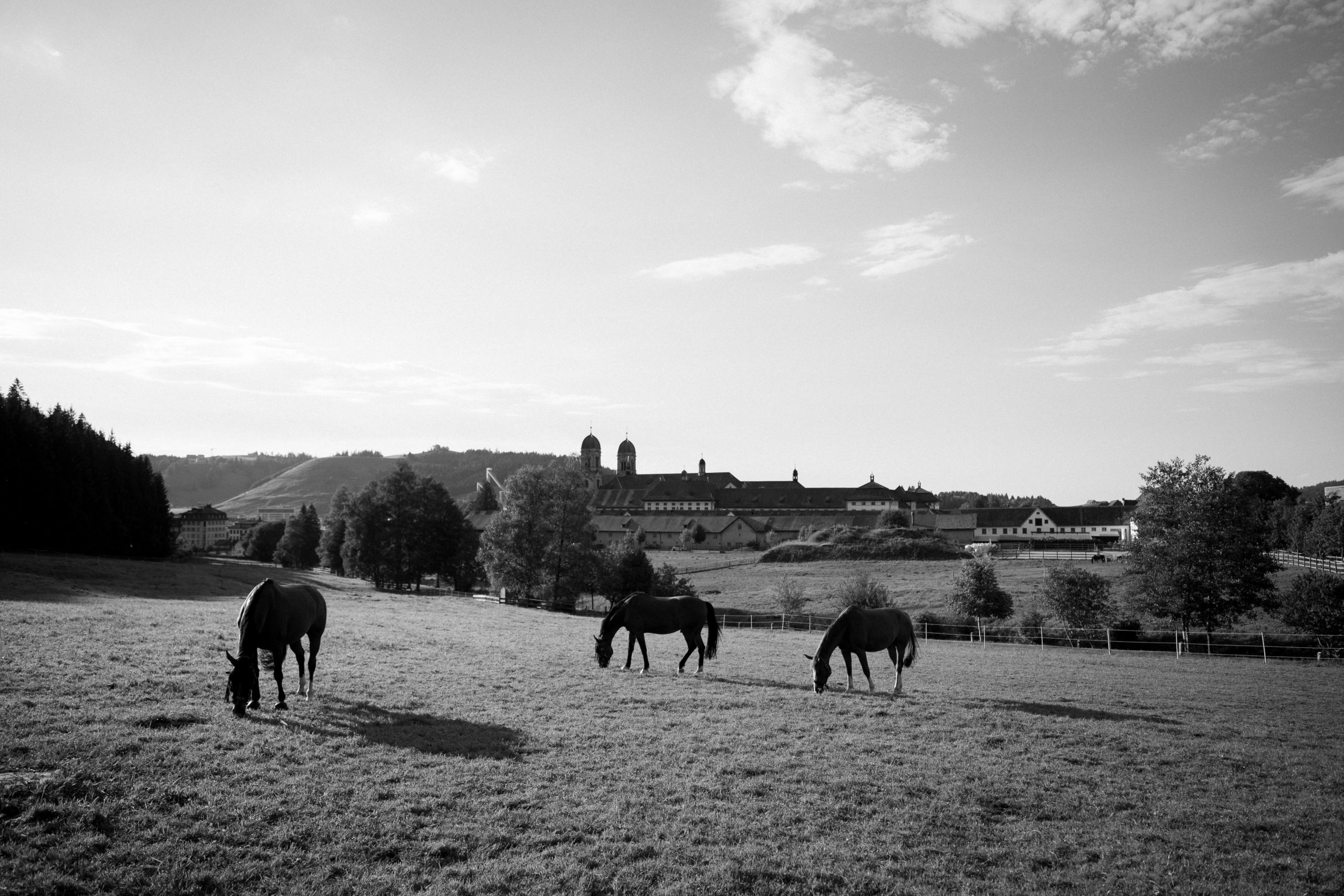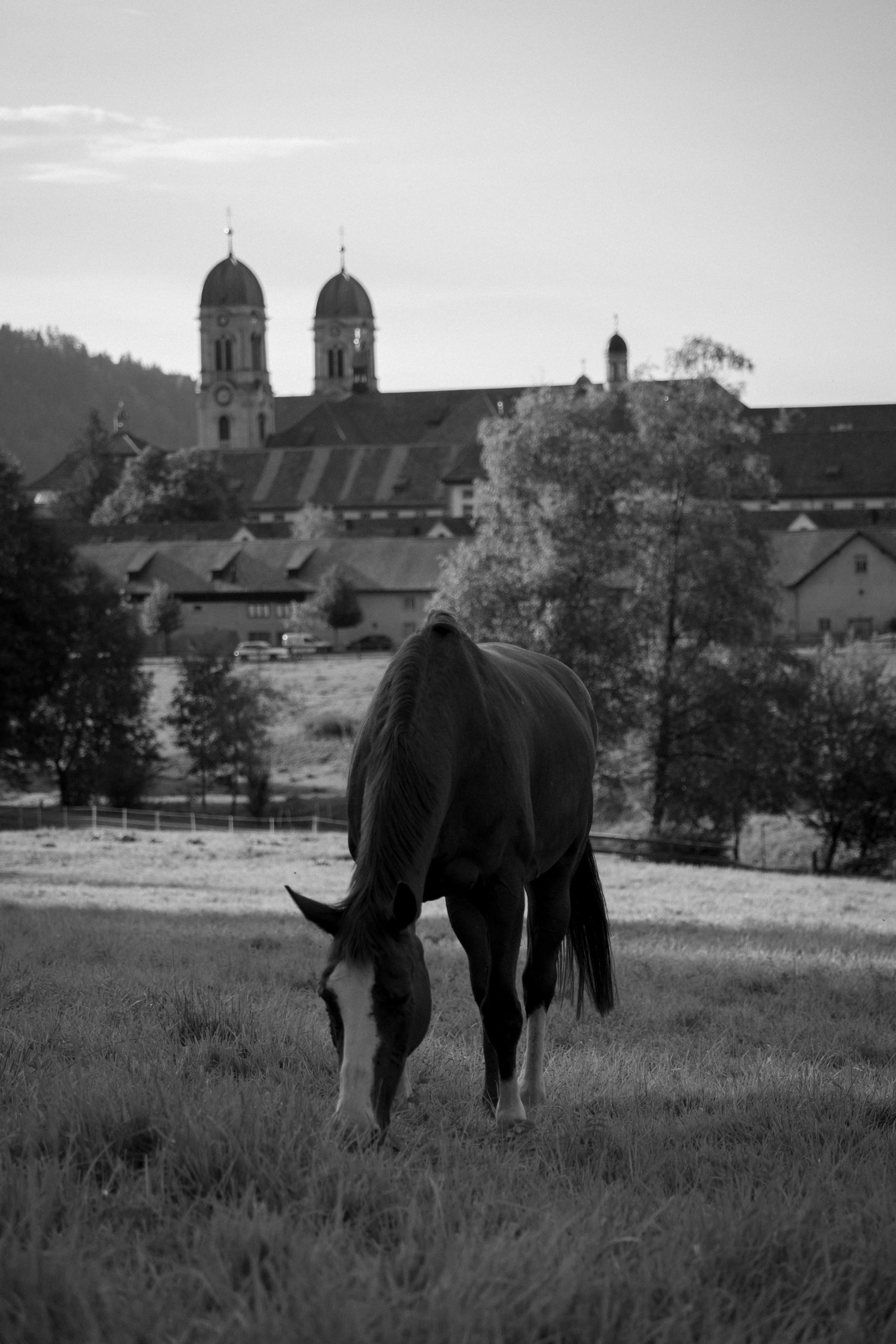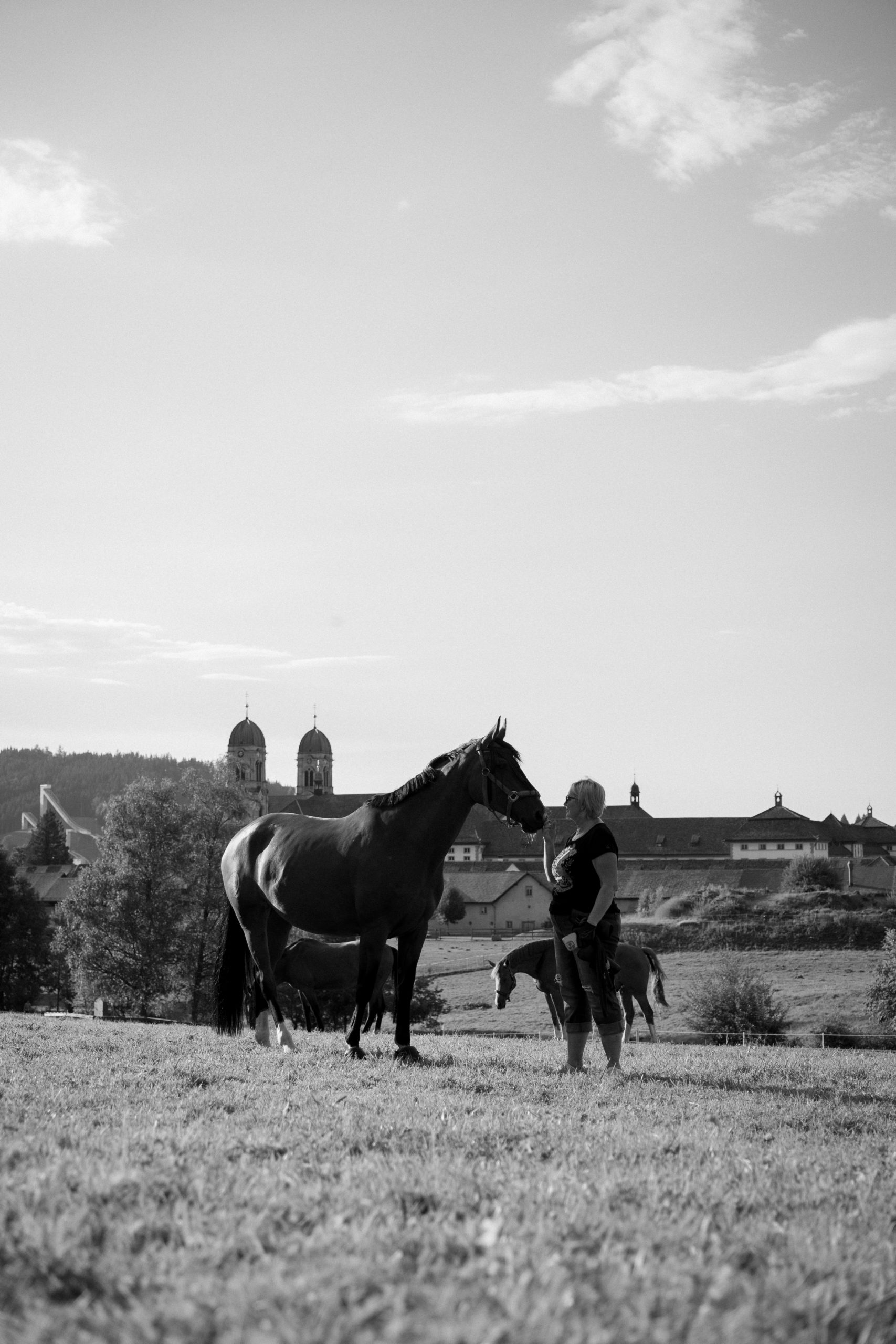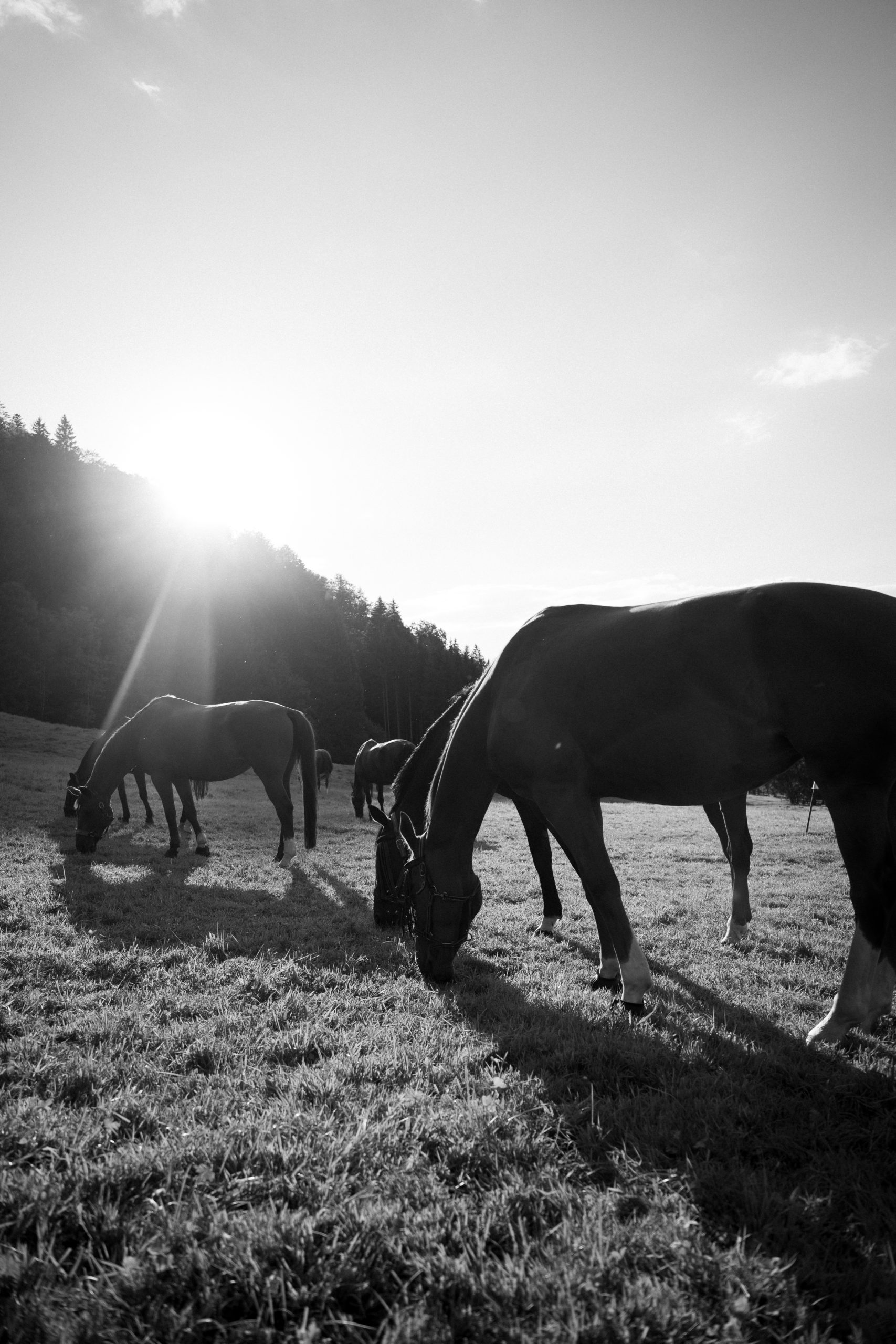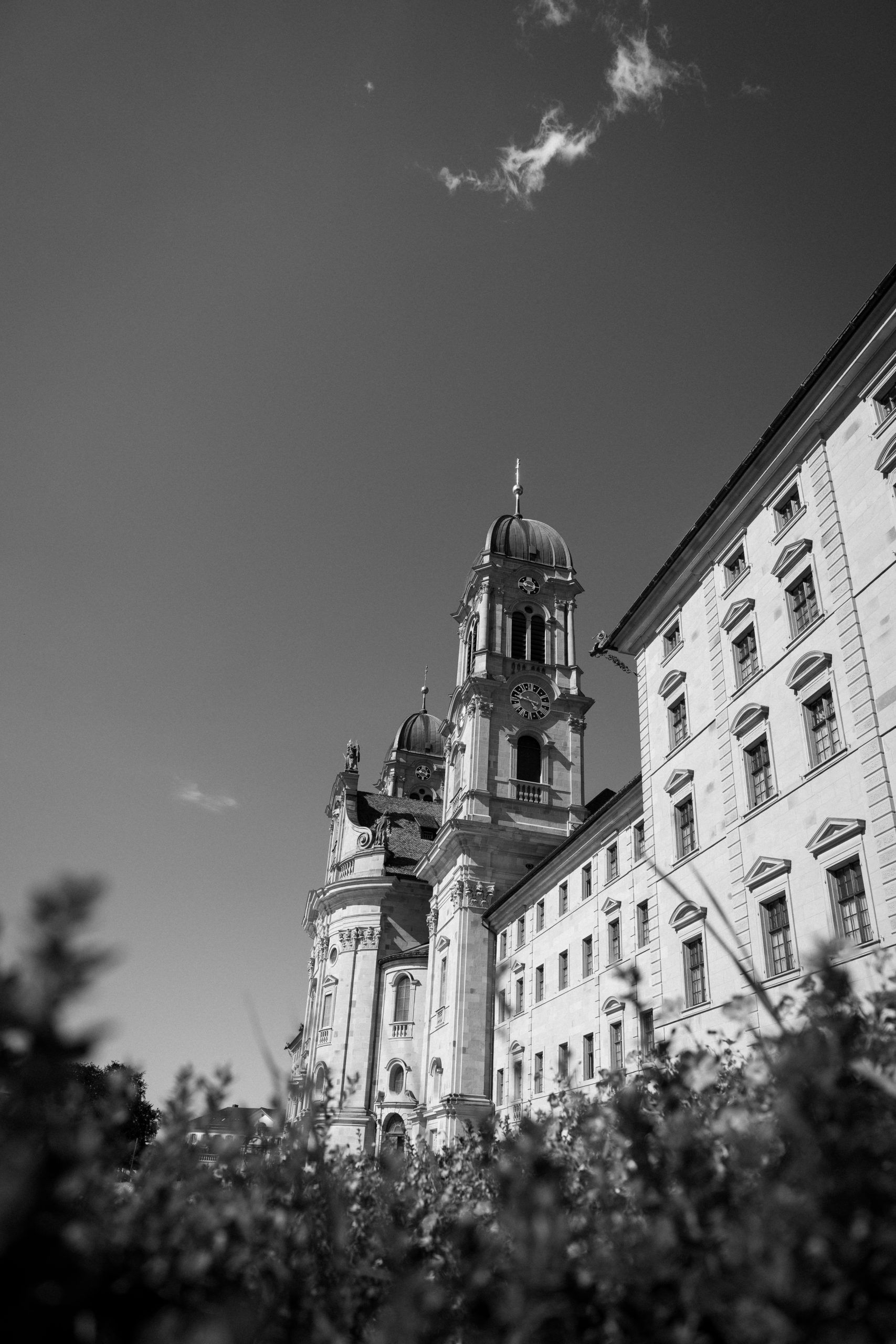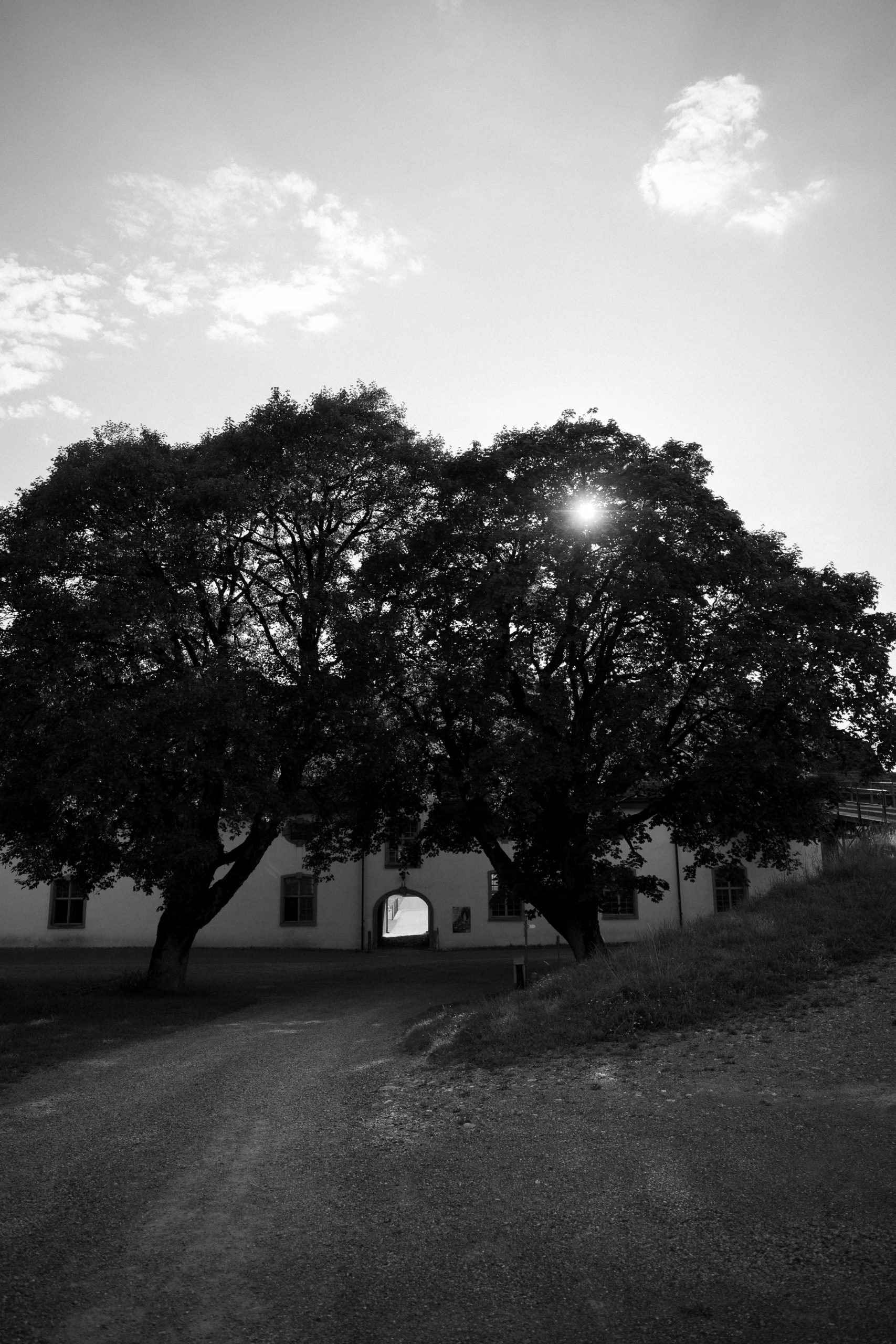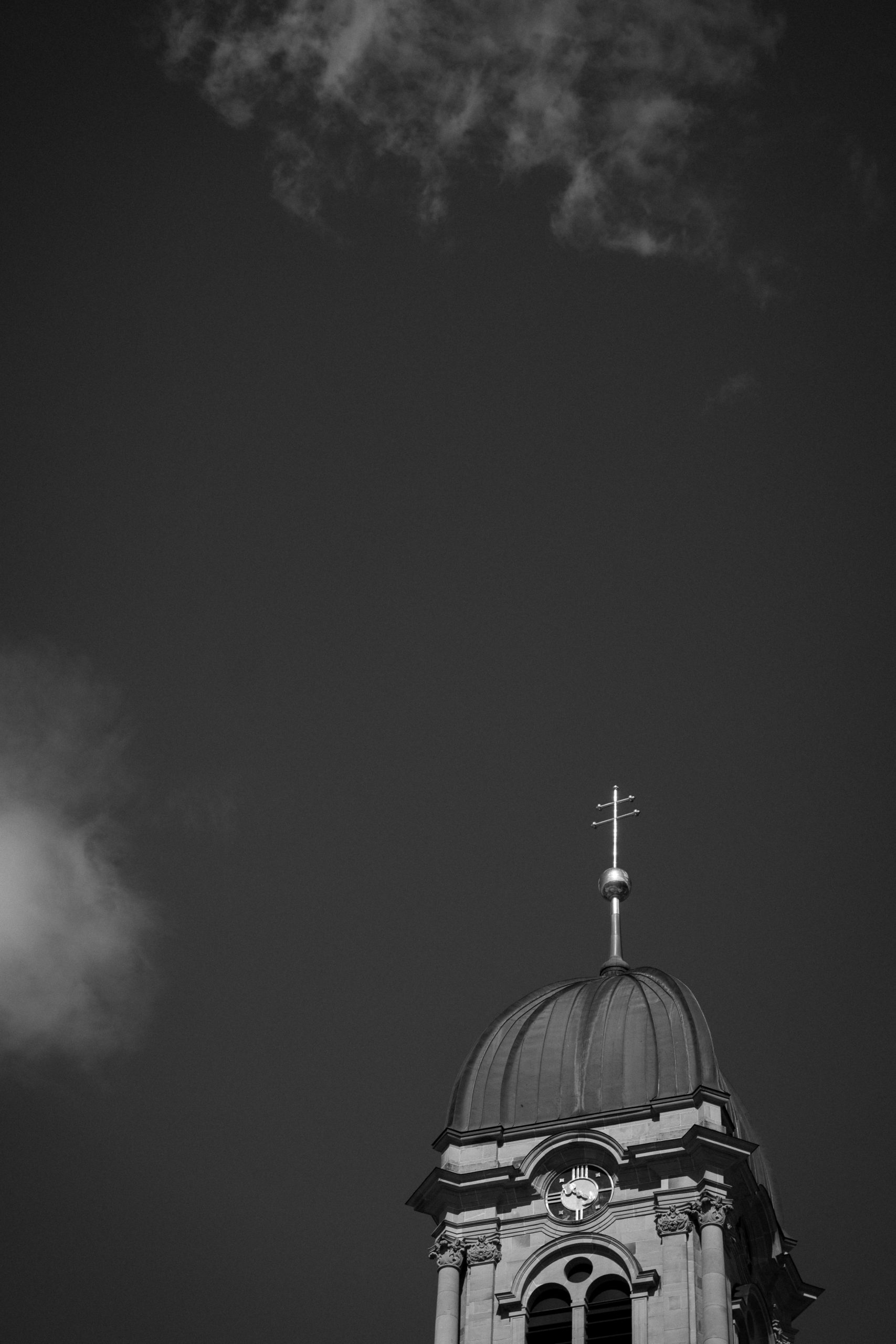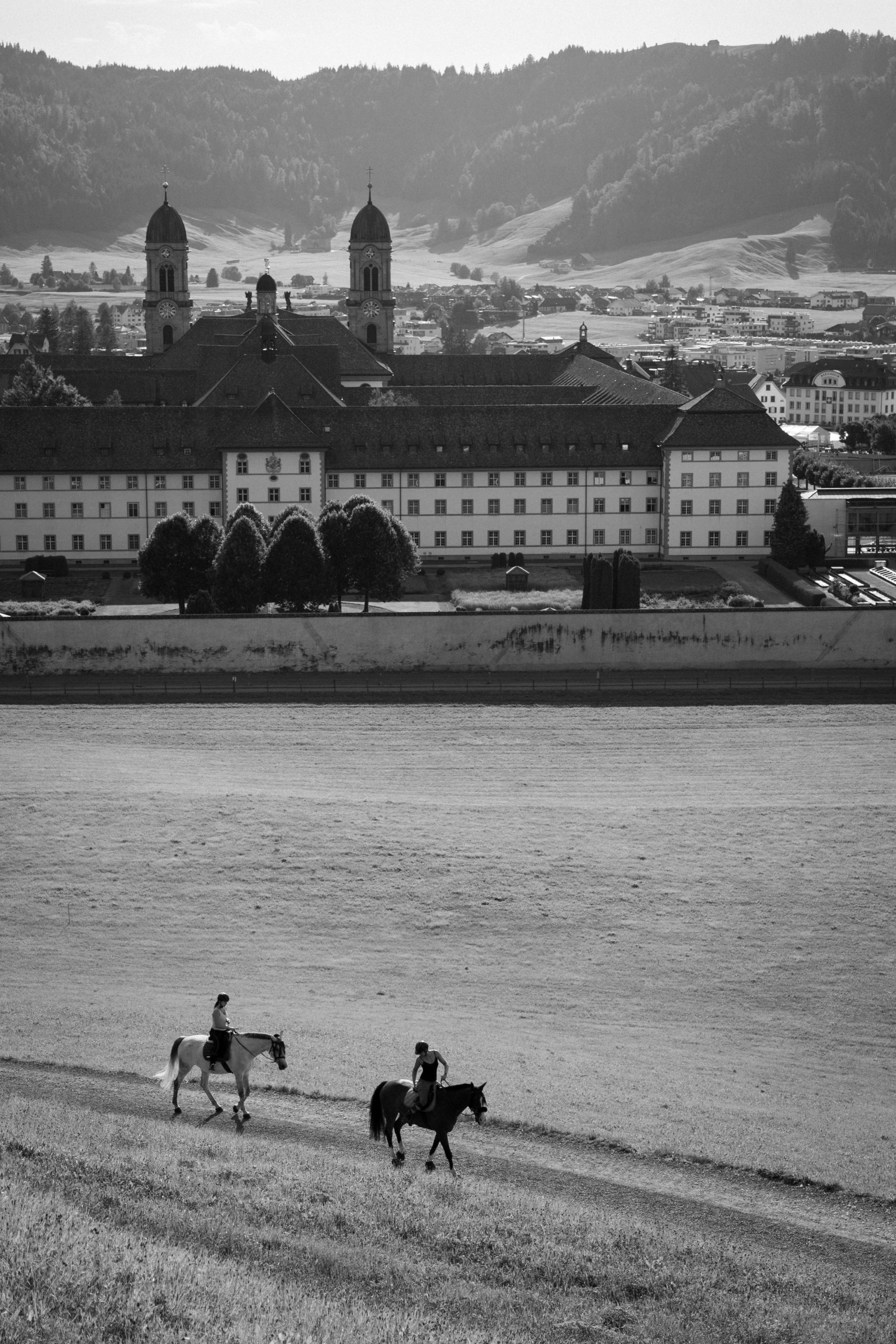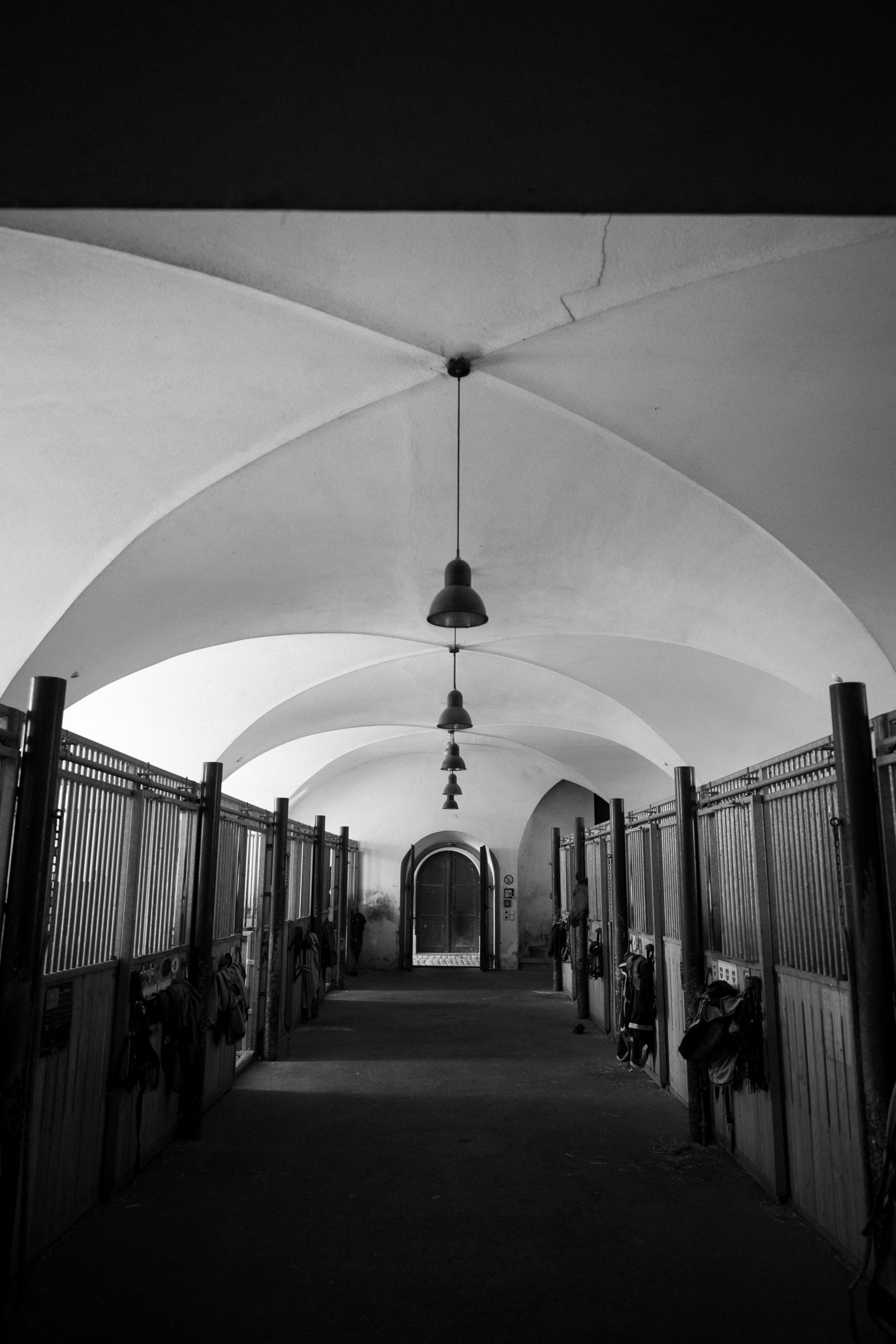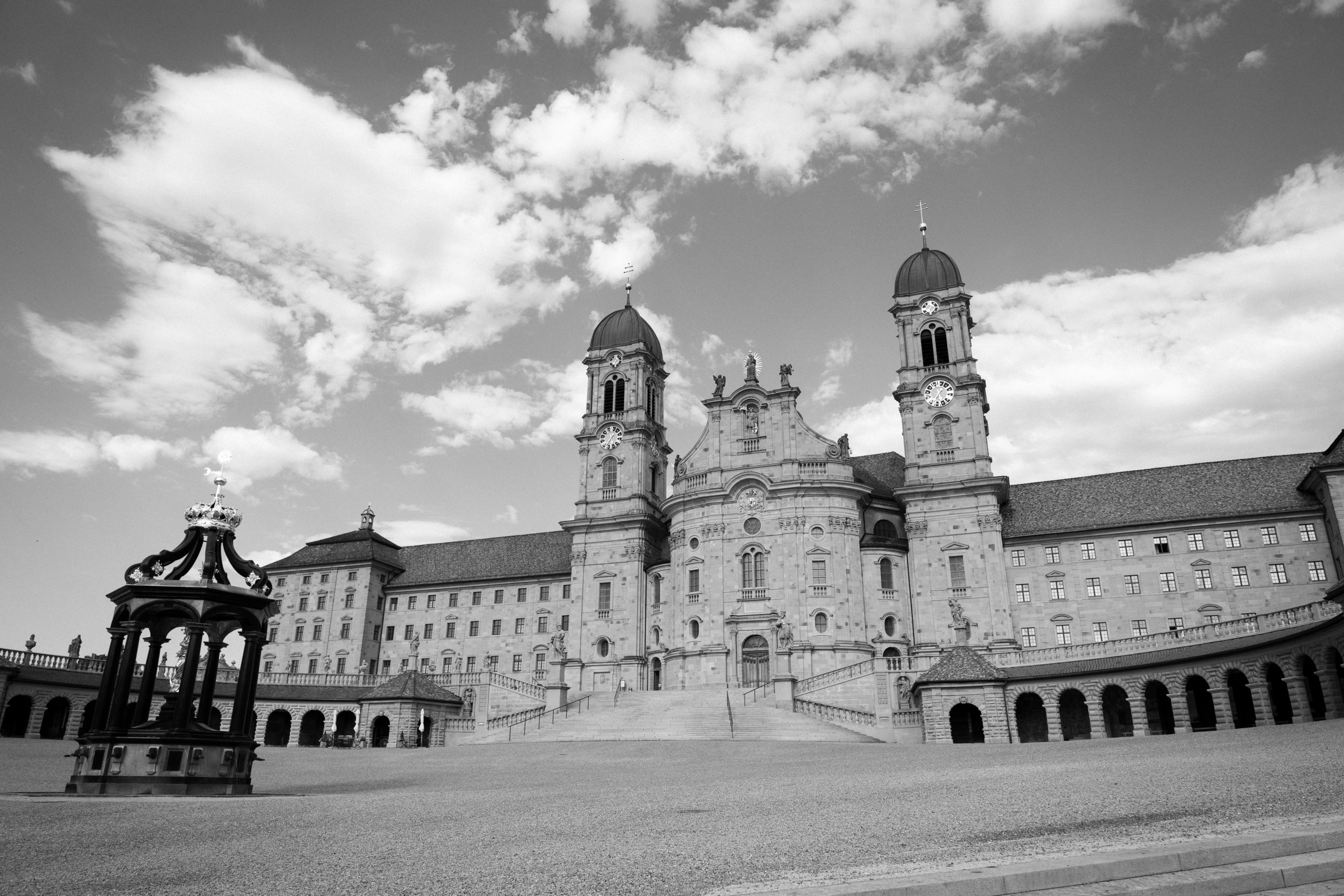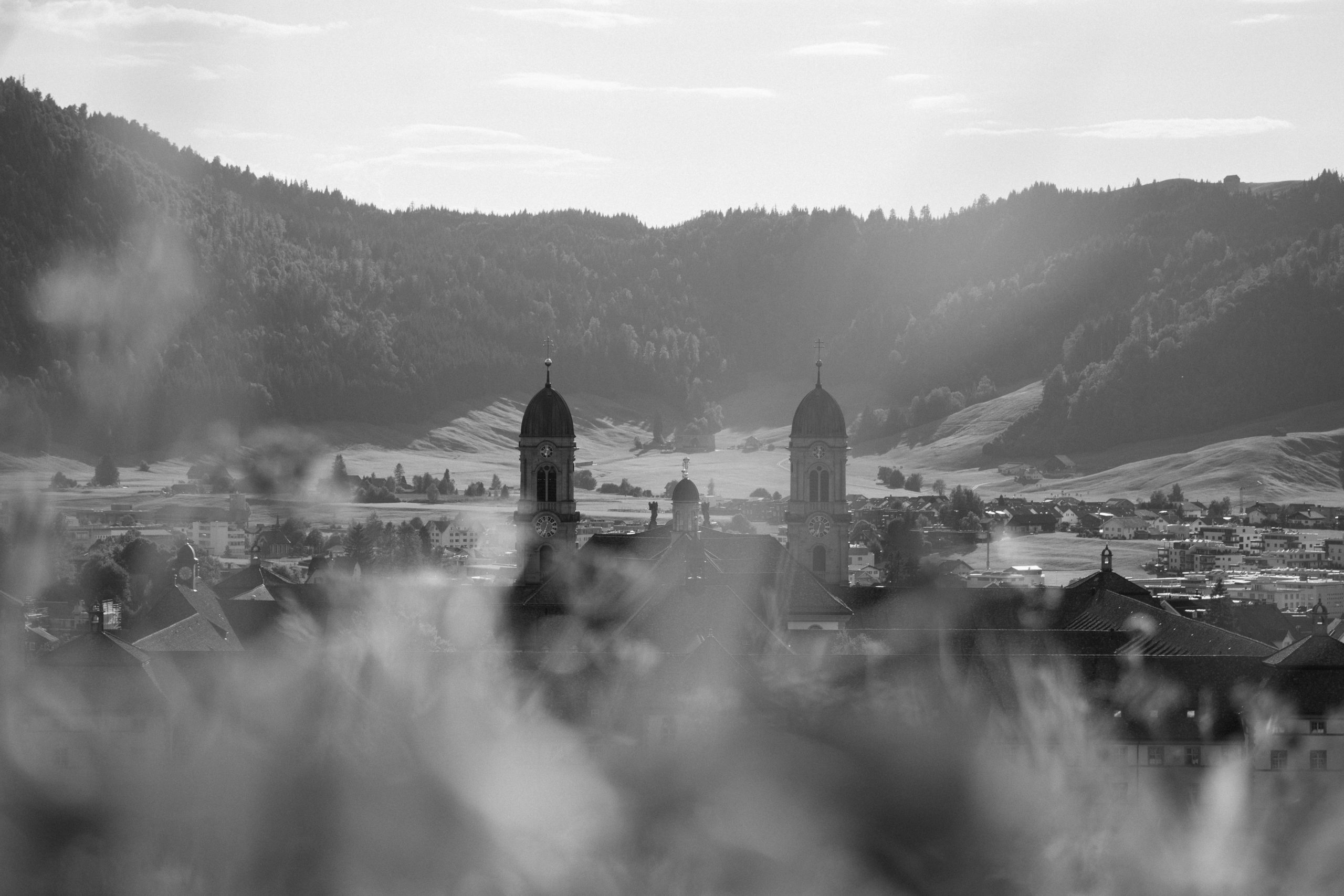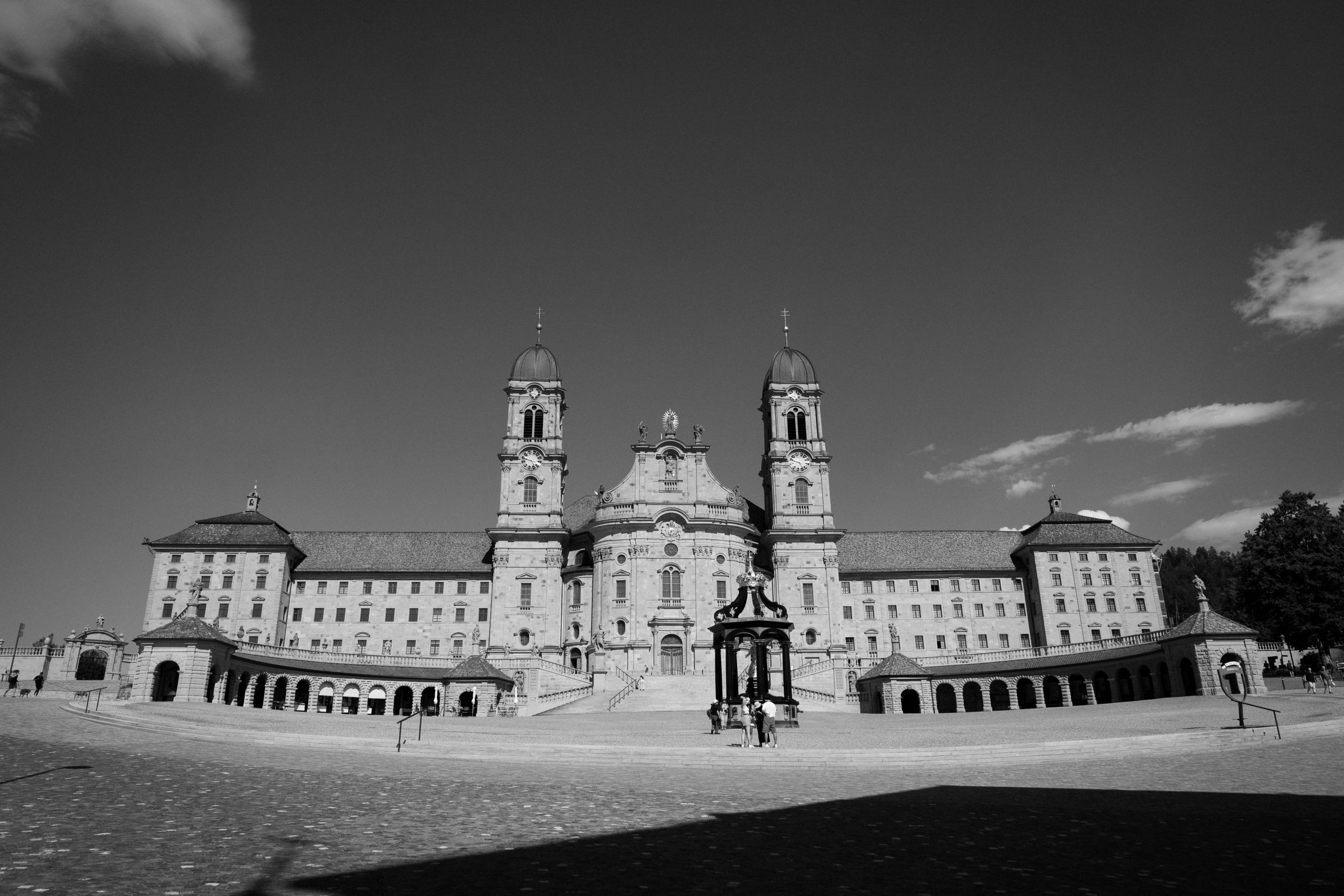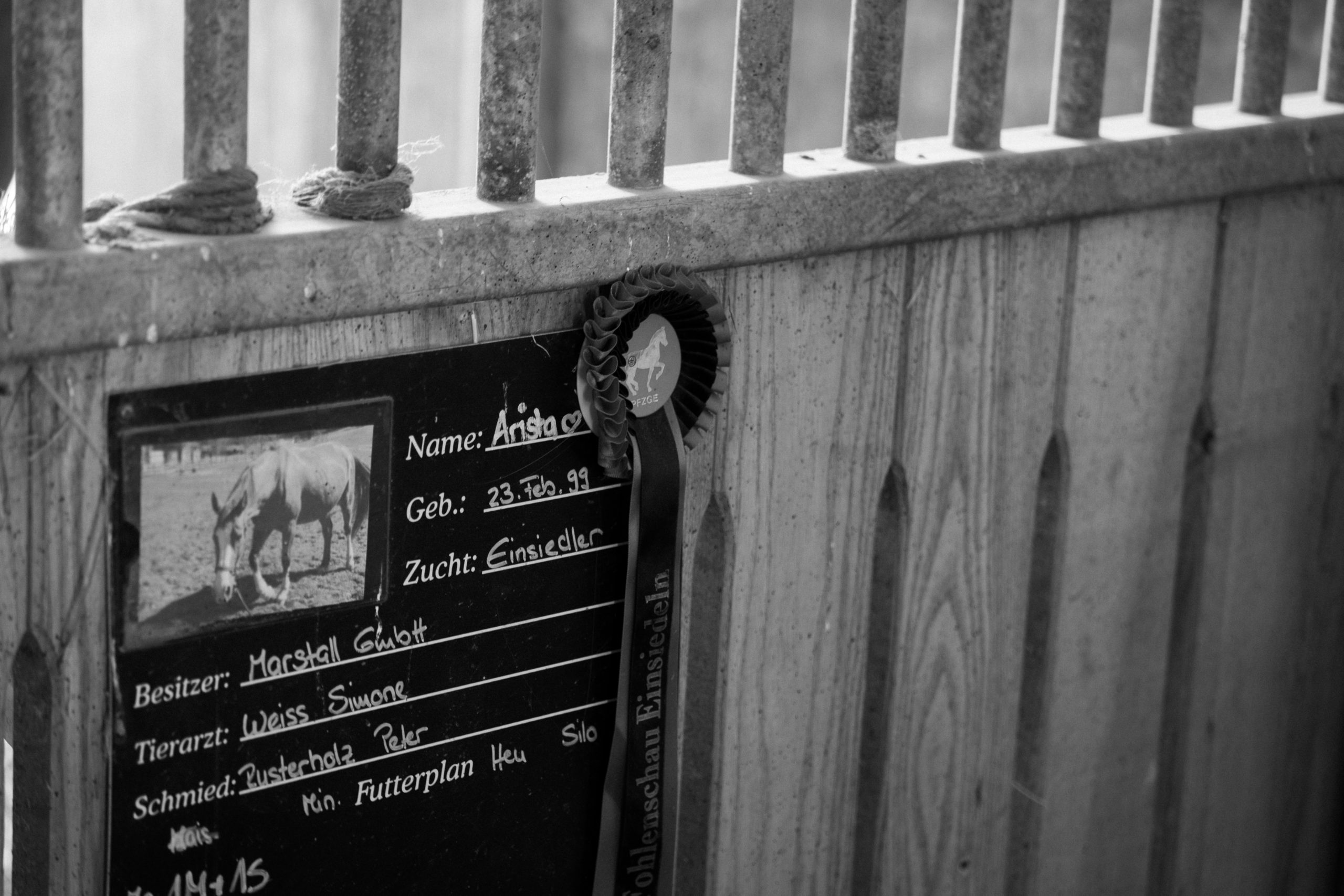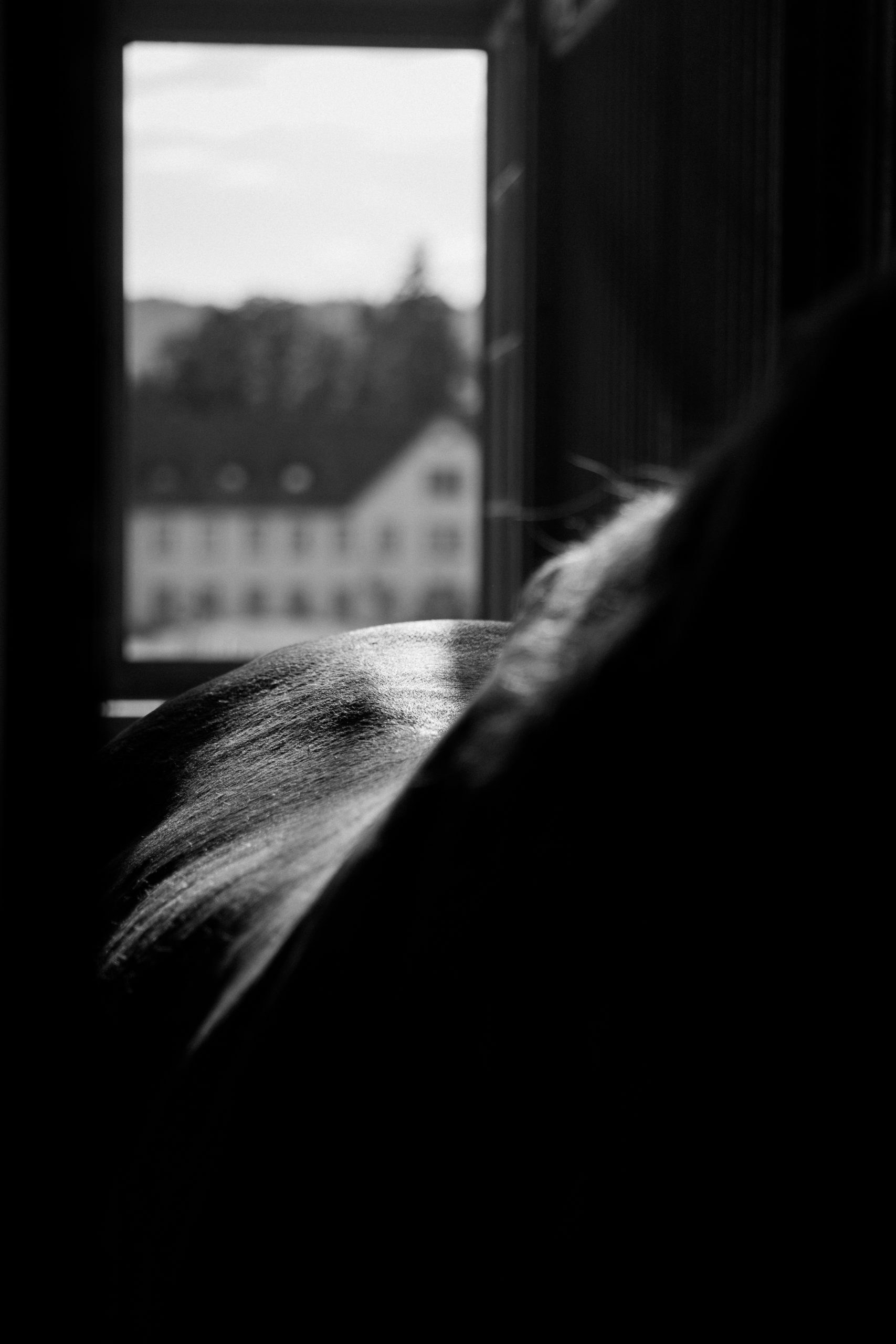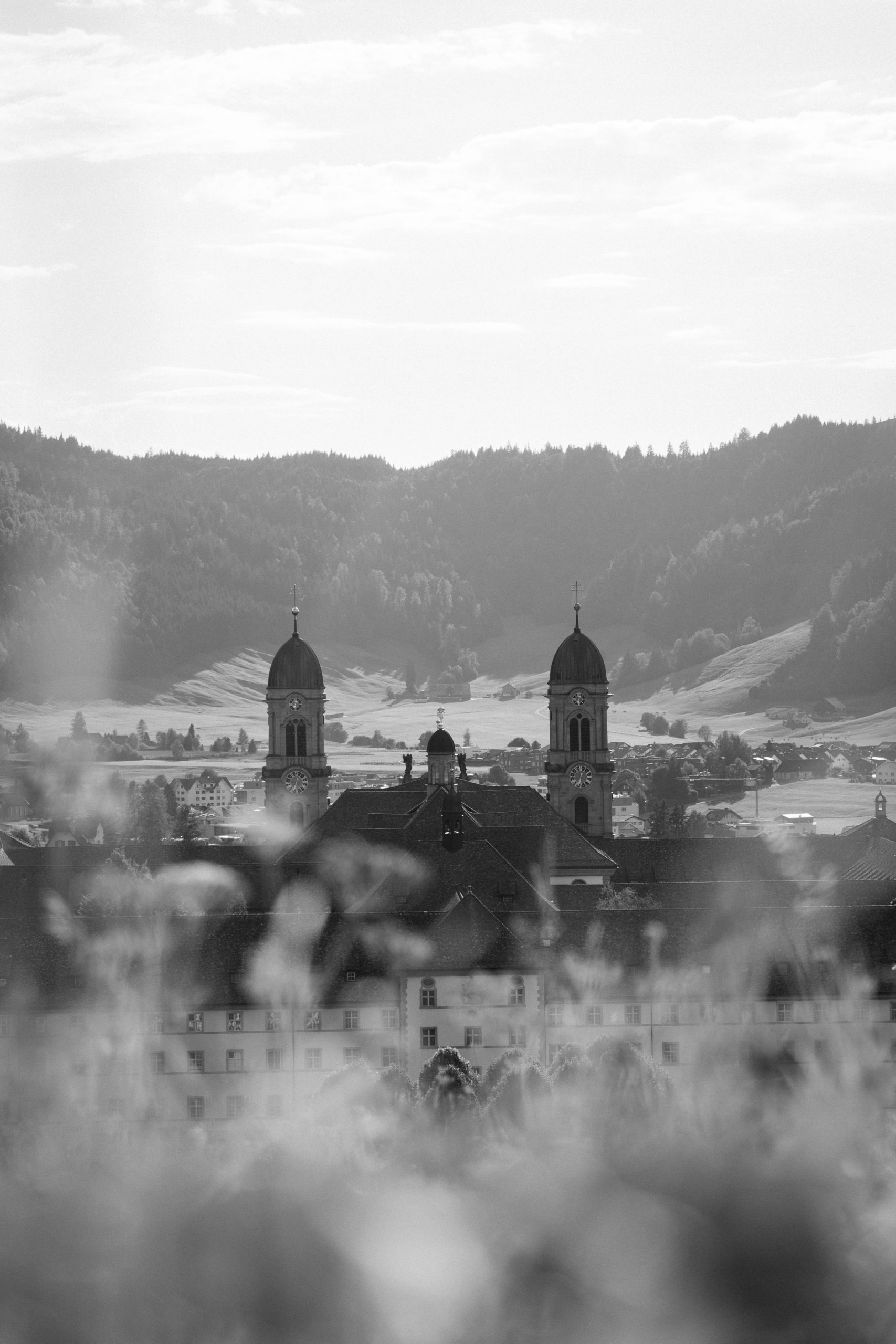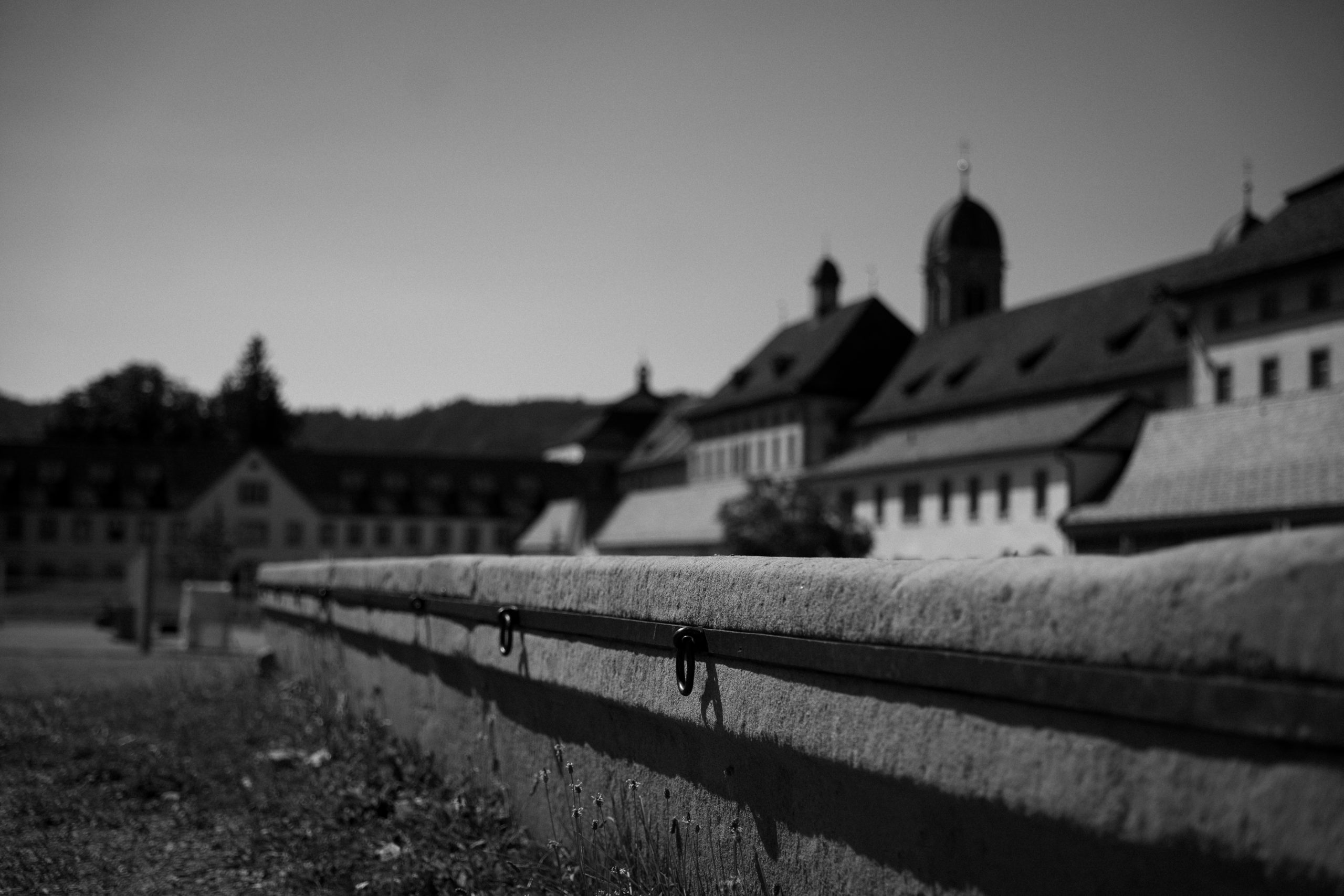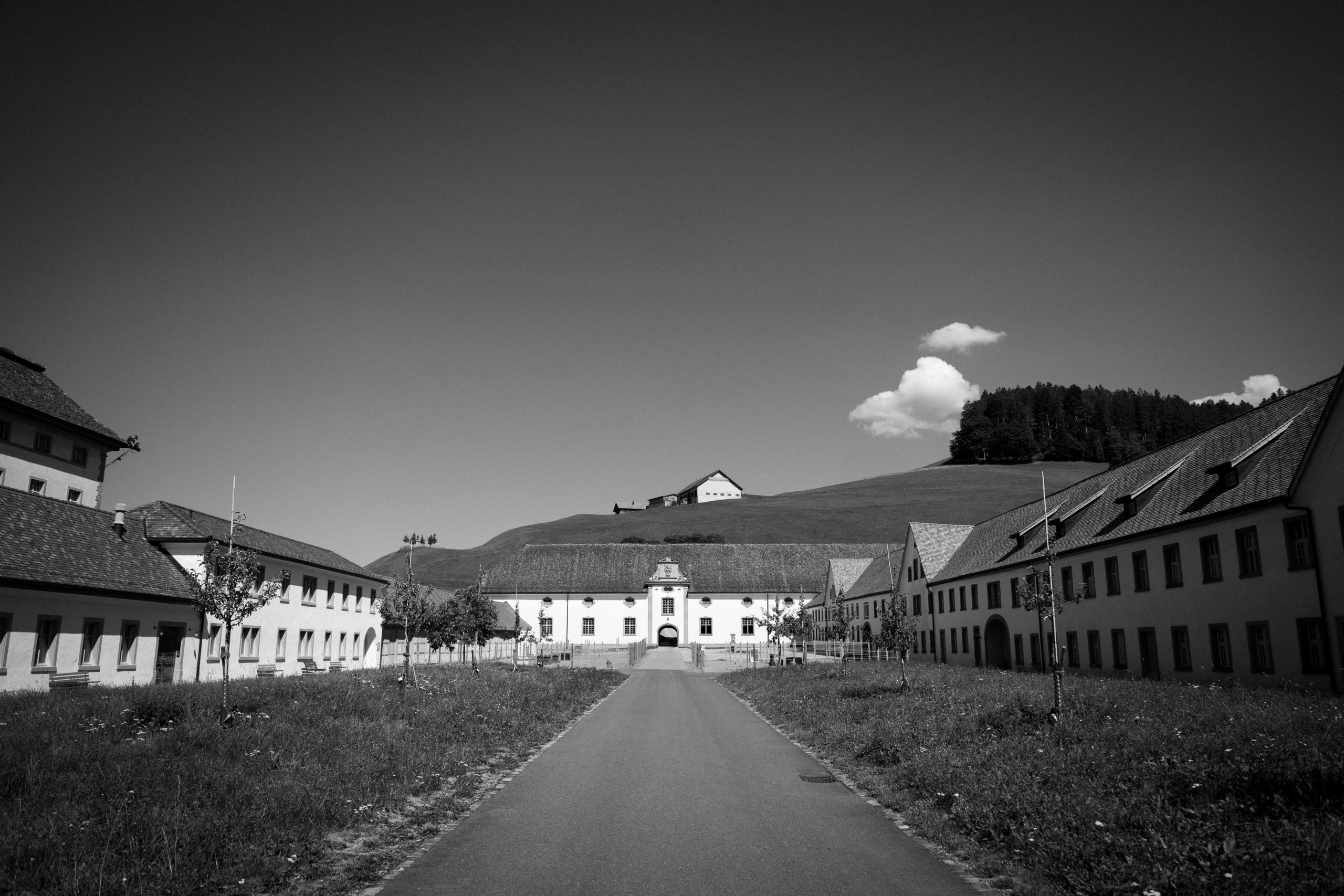IN THE HEART OF SWITZERLAND, A MONASTERY BUILT IN THE 10TH CENTURY IS HOME TO THE OLDEST STUDBOOK IN EUROPE: AT EINSIEDELN ABBEY, A PLACE OF PILGRIMAGE NEAR ZURICH, HORSES HAVE BEEN BRED FOR ALMOST 1000 YEARS. WE WENT BEHIND THE WALLS OF A CLOISTER WHERE THE DAILY LIFE OF THE MONKS IS MIXED WITH THAT OF THE HORSEMEN.
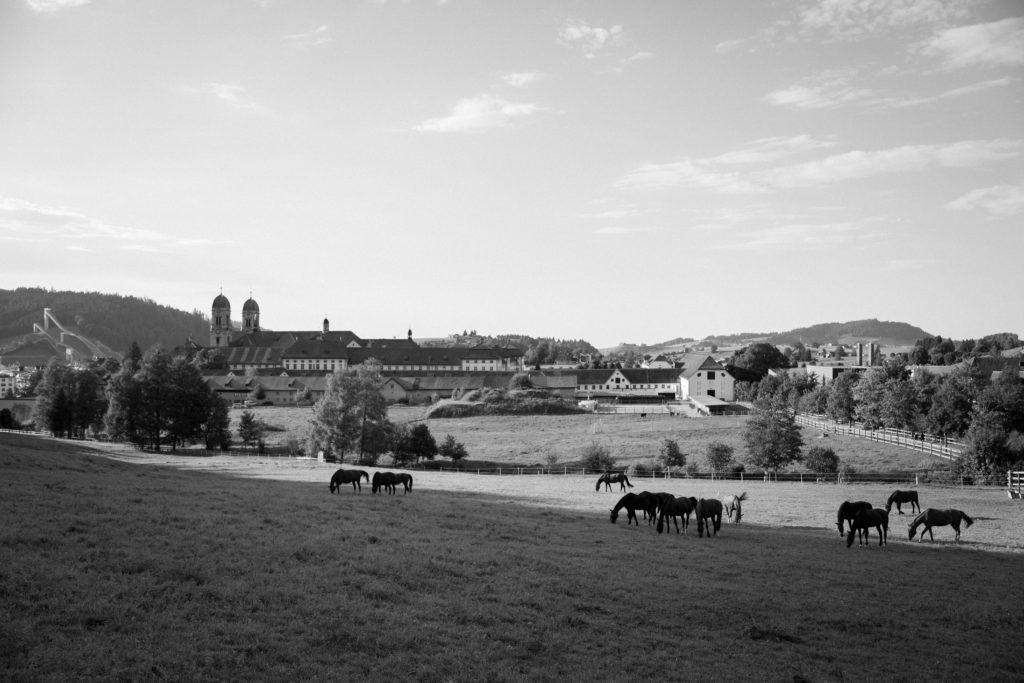
The bells never seem to stop ringing. They resound in the immense empty court- yards, between the white walls, on the pebbled forecourt and even in the coniferous forests that surround the abbey. And when the twelve bumblebees finally come to rest in their stone cage, their vibration still permeates the immense religious complex which seems to have been placed there like a forgotten crown in a field.
A neighing sound follows the announcement of vespers: from one of the high windows in one of the wings of the Benedictine monastery, emerges the head of a bay horse. Because Einsiedeln Abbey is not only a place of pilgrimage, built on the site where the hermit Meinrad withdrew from civilization in the year 835. It is also the oldest stud farm in Europe: horses known as Einsiedler Pferde have been bred here for 1000 years. Located on the axis of the Gotthard Pass, which links Switzerland to Italy, the monastery is an important crossing point for both monks and merchants. Hors- es have been part of the landscape since the Middle Ages. Under saddle, they allowed the paters, the Benedictine monks, to roam the region to celebrate masses and visit their families. Harnessed, they are indispensable allies in the work in the fields and the trans- port of wood, which the abbey consumes a lot of during the long cold season. The monastery had up to 150 horses.
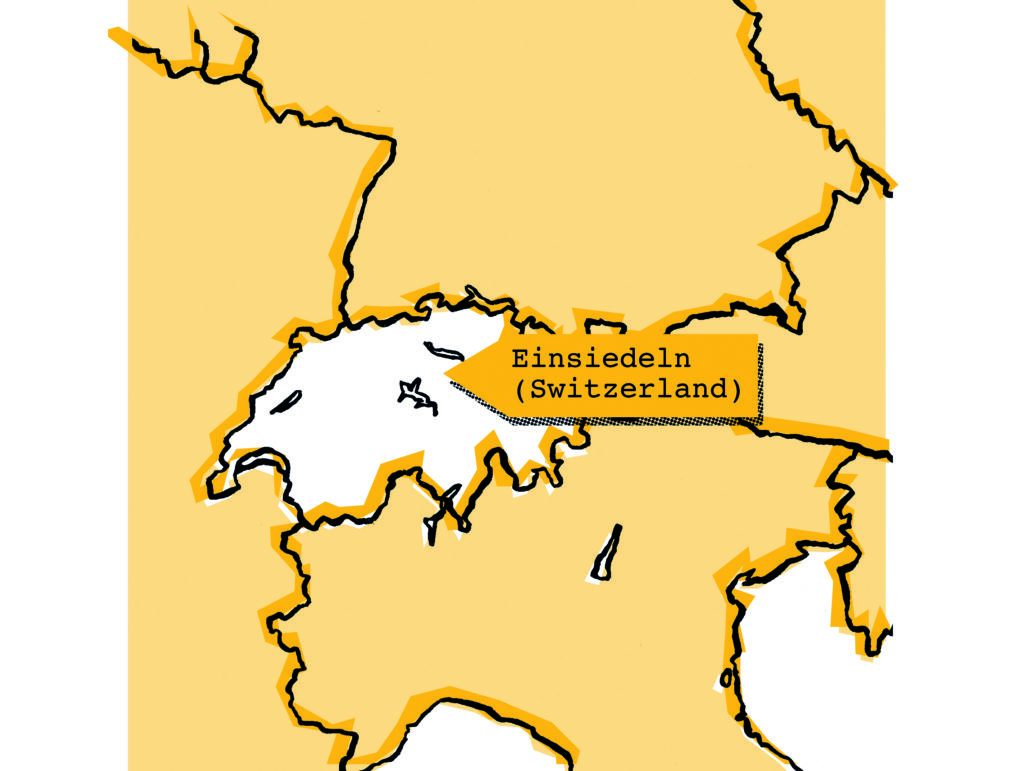
STABLES WORTHY OF A MUSEUM
The sun descends over the green hills surrounding the little Swiss village. Under the high whitewashed vaults of the stables, renovated 20 years ago, the horses are getting impatient. It’s time for them to go out. Ursi Kälin only has to say a word and a handful of employees suddenly appear, put their halters on the horses and go out into the evening light. We still have 40 horses on site,” explains the manager of the Marstall Kloster Einsiedeln, leading a large chestnut to the field. A few decades ago, several monks still regularly rode the horses. But nowadays that’s no longer the case. We have boarders and I give riding lessons.
TRIBUTE TO THE VIRGIN
The time when the Einsiedler Pferde were one of the riches of this place of faith is not so long ago. Just a few centuries ago, the lords of northern Italy fought to take one of the so-called Cavalli della Madonna to their studs in honor of the black Madonna, carved from a piece of pear wood and darkened by the soot of candles, which has been enthroned in a dedicated chapel since the 15th century. This interest led the abbey fathers to list each of the products of their breeding as early as 1655: the first studbook in Europe was born. The breeding is so meticulously documented that it can be traced back 20 generations,” notes Ursi Kälin. It is based on three original mares whose lines continue to this day: Klima, Quarta and Sella.

BREEDING IN DANGER
A handful of breeders are perpetuating this heritage, but it is losing ground: only about 60 Einsiedler Pferde are listed in the studbook, which is centralized at the Swiss National Stud in Avenches. Most of them are born here, but not this year, as the two expected foals did not sur- vive. Since only the maternal line counts, it is not uncommon to see the names of some of the most successful sport stallions appear in the family trees: offspring of Zirocco Blue, Je t’aime Flamenco and Virtuoso Semilly are registered in the Einsiedeln studbook. However, the genetic make- up of these animals is not destined for the arenas of 5* shows, as for careers as leisure horses, their versatility and good character being legendary.
A cloud of dust rises, obscuring the abbey’s two bell towers as the last of the horses make their way along the path, past one of the stations of the cross that pilgrims follow around the monastery, a popular stop on the pilgrimage route to Santiago de Compostela.
If you ask Ursi what distinguishes an Einsiedeln horse from another Swiss warmblood, she’ll probably let her silence linger for a few seconds before turning to her grazing animals higher up the valley and saying: “At first glance, nothing. But when evening falls, if you are lucky, you’ll be able to see their halo…”
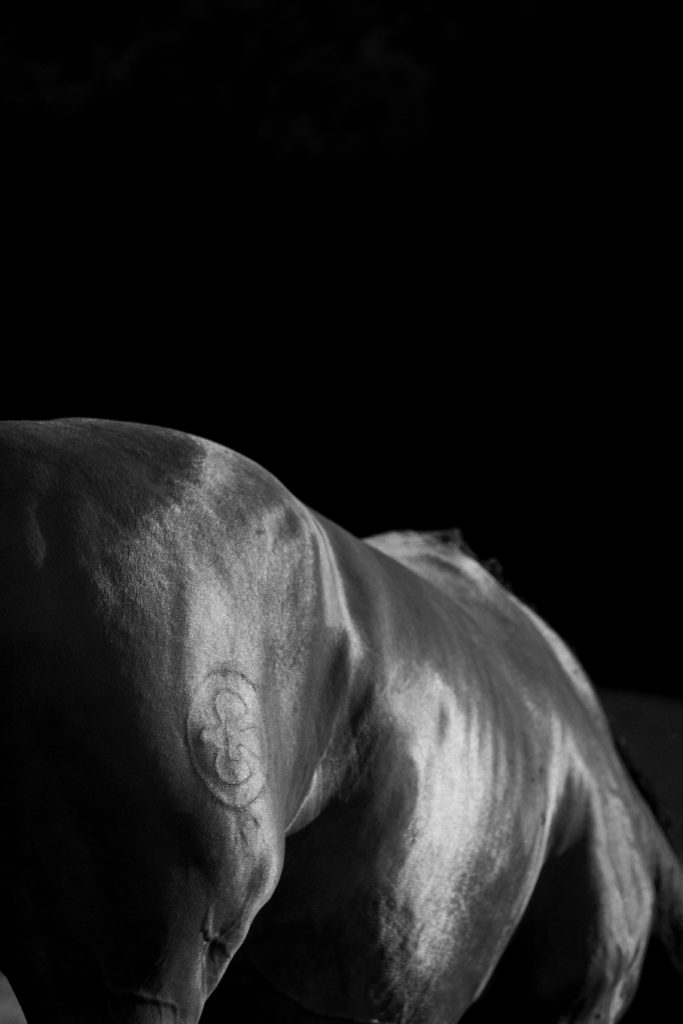
The fire brand on the horses
of the studbook refers to the founder of the abbey, the her- mit Meinrad of Einsiedeln: According to legend, two ravens brought the murderers of the man of faith to the judge. The ravens are represented everywhere in the small town, from coats of arms to the details of the abbey’s façade.

